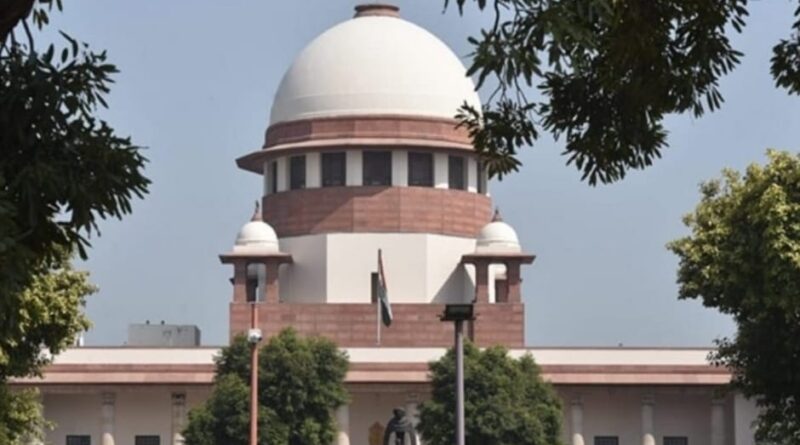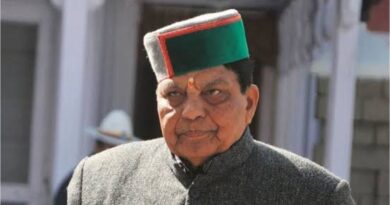Water Crisis in Northern India: SC directs Himachal to aid Delhi
Northern India’s intricate water dynamics have escalated into a significant issue, with states vying for limited water resources.
Himachal Pradesh, a state blessed with an abundance of rivers and glaciers, plays a critical role in this water network.
The Supreme Court on Thursday intervened in a dispute involving the states of Himachal Pradesh, Haryana, and Delhi, highlighting the pressing water crisis exacerbated by extreme heatwaves and the consequent thawing of glaciers.
According to Revenue and Secretary IPH Onkar Sharma, the state’s government did not receive a copy of the SC order, and the state would take the next course of action after having the complaint.
Supreme Court addressed an urgent petition by the Delhi government concerning severe water shortages in the capital. The court ordered Himachal Pradesh to release 137 cusecs of water from its reservoirs, including the Hathni dams on the Himachal-Haryana border, to alleviate the crisis in Delhi.
This directive was issued by a Vacation Bench comprising Justices Prashant Kumar Mishra and KV Viswanathan amidst an intense heatwave that has seen temperatures soar past 50 degrees Celsius in parts of northern India.
SC order mandated Himachal Pradesh to notify Haryana in advance of the water release to ensure a smooth transfer through the Upper Yamuna River system. Haryana was instructed to facilitate the unimpeded flow of water from the Hathnikund barrage to Delhi’s Wazirabad reservoir.
The Upper Yamuna River Board (UYRB) was tasked with measuring the water to ensure accurate delivery, with a status report due on the subsequent Monday.
The Delhi government, represented by Senior Advocate Dr. Abhishek Manu Singhvi, argued for the necessity of water supply from Himachal Pradesh, commending the latter’s willingness to cooperate.
In contrast, Haryana’s counsel raised concerns about the feasibility of the water transfer, citing difficulties in measuring and distinguishing surplus water. However, the court emphasized that its order was based on a UYRB report rather than the petition alone.
Justice Viswanathan underscored the fungible nature of water, likening it to money, thereby supporting the argument that water released upstream would benefit Delhi downstream. Despite Haryana’s logistical concerns, the court’s order emphasized the need for cooperative governance and prompt action to mitigate the water crisis.
This Supreme Court directive underscores the critical role of inter-state cooperation in managing shared water resources, especially in the context of increasing climate variability and extreme weather events.
Delhi Chief Minister Arvind Kejriwal who was booked in a PMLA case was under Judicial custody after ED detention.
The AAP govt knocked on the door of SC after having no action from the Union and BJP-ruled state Haryana.
The legal dispute highlights the necessity for a more integrated and coordinated approach to water resource management among states, backed by scientific assessments and equitable distribution mechanisms.
Himachal Pradesh’s glaciers are vital for maintaining water supply across several states, including Haryana, Punjab, Rajasthan, and Delhi.
As glaciers melt during intense summer heat waves, river discharge increases, yet groundwater levels continue to decline, creating a paradox of abundance and scarcity. This seasonal variability compels states to depend heavily on surface water from rivers originating in Himachal Pradesh to meet their drinking and irrigation needs.
For Delhi, this intervention is a temporary relief from its acute water scarcity, but it also raises broader questions about sustainable urban water management.
As cities continue to grow, their water demands will only increase, necessitating long-term strategies that include conservation, recycling, and efficient distribution systems.
Himachal Pradesh’s role as a water supplier to several states underlines the importance of preserving its glaciers and river systems.
This situation also brings to light the potential conflicts that can arise from climate-induced changes in water availability, pushing states into contentious disputes over vital resources.
The Supreme Court’s decision to direct Himachal Pradesh to release water to Delhi amid a severe heatwave and water shortage is a significant step towards addressing immediate needs.
However, it also underscores the importance of sustainable water management practices and the need for inter-state cooperation to ensure equitable distribution of resources.
As climate change continues to affect water availability, states must work together to develop resilient systems that can adapt to and mitigate the impacts of these changes, ensuring that all regions have access to the water they need.



